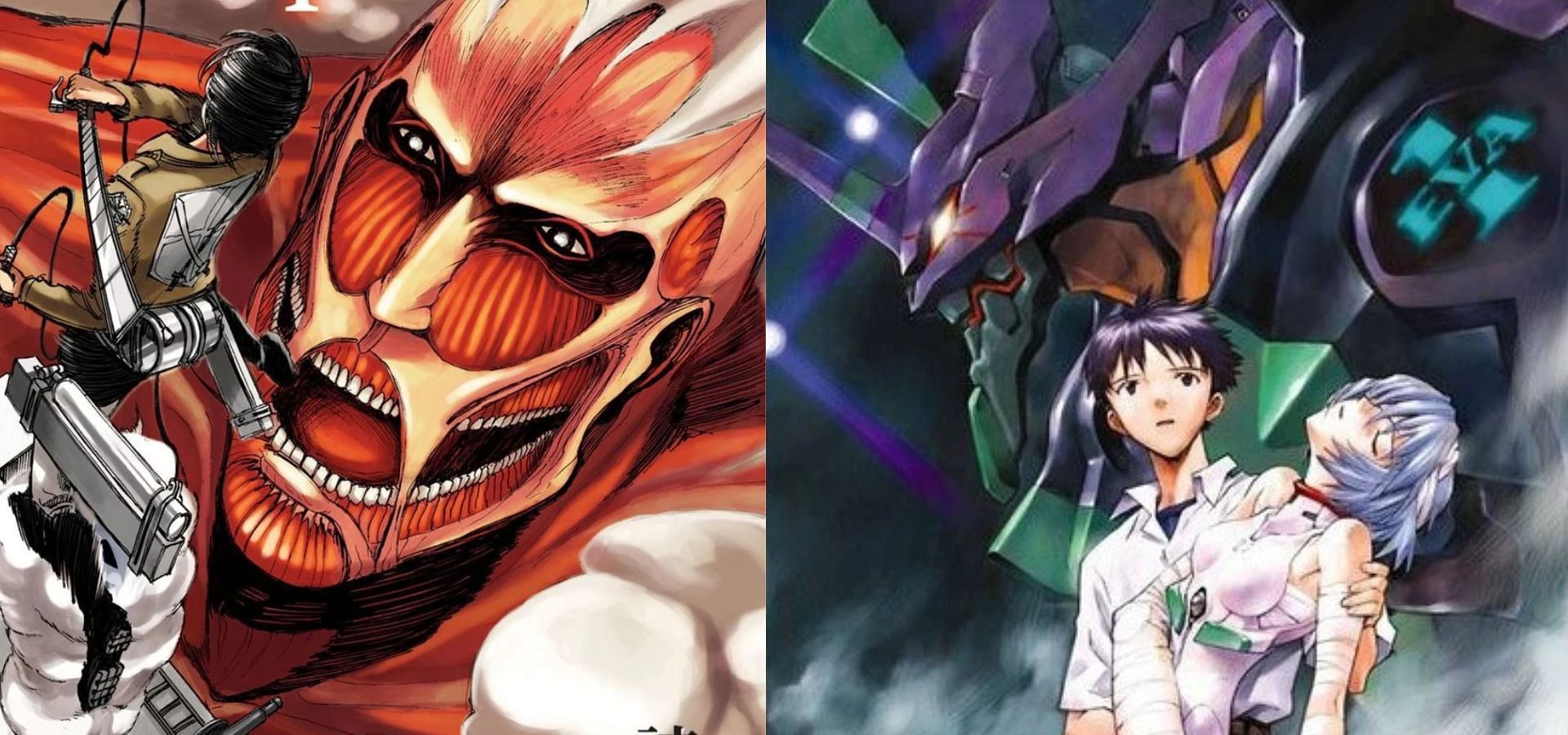Weekly Shonen Jump: The Heartbeat Of Manga Culture
Hey there, manga lovers! If you're stepping into the world of Weekly Shonen Jump, you're about to dive into one of the most iconic platforms in the manga universe. This legendary anthology has been a cornerstone for some of the greatest stories ever told, and it continues to inspire fans around the globe. Whether you're new to the scene or a lifelong fan, this guide will take you on a journey through its history, influence, and the magic that makes it so special. So grab your favorite snack, sit back, and let's explore what makes Weekly Shonen Jump so legendary.
Weekly Shonen Jump isn’t just a magazine—it’s a cultural phenomenon. For decades, it’s been the go-to source for fans who crave action-packed, emotionally charged, and thought-provoking stories. From Dragon Ball to Naruto, One Piece to My Hero Academia, the anthology has consistently delivered unforgettable tales that resonate with readers of all ages. It’s more than just pages filled with panels; it’s a community, a tradition, and a celebration of creativity. So, let’s dive in and uncover what makes Weekly Shonen Jump such a beloved institution in the manga world.
This guide will cover everything you need to know about Weekly Shonen Jump, from its humble beginnings to its massive impact on global pop culture. Whether you're looking to relive your favorite series or discover new gems, this article has got you covered. Let's get started!
Read also:Hdhubforu A Comprehensive Dive Into The Streaming Phenomenon
Here's a quick overview of what we'll be discussing:
- The Rich History of Weekly Shonen Jump
- Iconic Series That Defined the Magazine
- The Editorial Process Behind the Magic
- Who Exactly Is Weekly Shonen Jump For?
- The Global Influence of Weekly Shonen Jump
- Weekly Shonen Jump in the Digital Age
- Diverse Manga Genres in the Anthology
- The Passionate Fan Community Around Weekly Shonen Jump
- Where Is Weekly Shonen Jump Headed Next?
- Conclusion: Why Weekly Shonen Jump Still Matters
The Rich History of Weekly Shonen Jump
Let’s take a trip back in time. Weekly Shonen Jump first hit the stands way back in 1959, courtesy of Shueisha. Back then, it was simply called "Weekly Shonen Jump," and its mission was clear: capture the hearts of young male readers with thrilling stories and dynamic artwork. Over the years, it transformed into the powerhouse we know today, earning the nickname "Weekly Shonen Jump" from its devoted fans.
Early Beginnings
In its early days, Weekly Shonen Jump focused on shorter, episodic stories designed to grab attention quickly. These early issues featured a mix of comedy, sports, and adventure manga, setting the tone for what would become the magazine's signature style. As the years rolled on, the anthology started experimenting with different genres, drawing in a wider audience and proving that it wasn’t afraid to evolve.
Key Milestones
- 1960s: This decade marked the magazine's rise to prominence with iconic series like "Kochira Katsushika-kun" and "Speed Racer." These stories weren’t just fun—they laid the groundwork for what Weekly Shonen Jump would become.
- 1980s: Considered the golden age of Weekly Shonen Jump, this era saw the debut of legends like "Dragon Ball" and "City Hunter." These series weren’t just hits in Japan—they became global phenomena.
- 2000s: The modern classics like "Naruto" and "Bleach" emerged during this time, cementing Weekly Shonen Jump's place in pop culture history. These series connected with fans worldwide, proving that the anthology’s appeal transcended borders.
Throughout its history, Weekly Shonen Jump has shown an incredible ability to adapt to changing trends while staying true to its core values of delivering top-notch storytelling.
Iconic Series That Defined the Magazine
When we talk about Weekly Shonen Jump, it’s impossible not to mention the legendary series that have graced its pages. These stories aren’t just part of the magazine—they’ve left an indelible mark on the entire manga industry.
Dragon Ball
Akira Toriyama's "Dragon Ball" revolutionized manga and anime. With its unique blend of martial arts, humor, and epic battles, it became a global sensation. The series' success skyrocketed Weekly Shonen Jump to new heights, inspiring countless creators and fans alike.
Read also:The Untold Truth Behind Natalie Morales Onair Incident A Closer Look
Naruto
Masashi Kishimoto's "Naruto" captured the hearts of readers worldwide with its coming-of-age story about a young ninja with big dreams. Its relatable characters and emotional depth struck a chord with fans, making it one of the most beloved series in the anthology’s history.
One Piece
Eiichiro Oda's "One Piece" is a testament to the enduring appeal of Weekly Shonen Jump. With over 1,000 chapters and counting, it continues to captivate audiences with its adventurous spirit and richly detailed world. It’s more than just a story—it’s a cultural phenomenon.
The Editorial Process Behind the Magic
Ever wondered how Weekly Shonen Jump selects the manga that appear in its pages? The editorial process is a fascinating mix of creativity and strategy. Editors work closely with mangaka to ensure that each story aligns with the magazine’s vision while giving creators the freedom to express themselves fully.
How It Works
- Concept Development: Mangaka pitch their ideas to the editorial team, who provide feedback and guidance. This collaboration ensures that every story starts on the right foot.
- Weekly Updates: Since the magazine is published weekly, creators must adhere to strict deadlines. While challenging, this pace also keeps the stories fresh and exciting.
- Reader Feedback: Weekly Shonen Jump takes reader input seriously, using it to influence which series continue or end. After all, the fans are the heart of the magazine.
This collaborative approach ensures that only the best stories make it to print, keeping readers hooked and coming back for more.
Who Exactly Is Weekly Shonen Jump For?
While Weekly Shonen Jump primarily targets young male readers, its appeal extends far beyond that demographic. The anthology’s diverse range of genres and themes ensures that there’s something for everyone, from action-packed adventures to heartwarming slice-of-life stories.
Why It Appeals to Such a Broad Audience
One of the reasons Weekly Shonen Jump has remained relevant for so long is its ability to evolve with its audience. As readers grow older, the magazine introduces more mature themes and complex narratives, ensuring that they stay engaged throughout their lives. It’s not just a magazine—it’s a companion that grows with you.
The Global Influence of Weekly Shonen Jump
The impact of Weekly Shonen Jump extends far beyond Japan’s borders. Its series have been adapted into successful anime, video games, and merchandise, creating a global phenomenon. The anthology’s influence on popular culture is undeniable, as it has inspired countless creators and fans worldwide.
Cultural Significance
Weekly Shonen Jump has played a pivotal role in shaping modern manga and anime. Its focus on character development, compelling storytelling, and stunning artwork has set a standard for the industry. As a result, it continues to inspire new generations of creators and fans alike.
Weekly Shonen Jump in the Digital Age
In an increasingly digital world, Weekly Shonen Jump has adapted to stay relevant. The magazine now offers digital versions of its issues, making it more accessible to a global audience. Plus, it’s embraced social media and online platforms to engage with fans in new and exciting ways.
Embracing Technology
From mobile apps to online communities, Weekly Shonen Jump continues to innovate and expand its reach. This commitment to staying ahead of the curve ensures that it remains a vital part of the manga landscape for years to come. Whether you’re reading on your phone or chatting with other fans online, the magic of Weekly Shonen Jump is always within reach.
Diverse Manga Genres in the Anthology
Weekly Shonen Jump is known for its wide variety of genres, catering to every taste and preference. From action and adventure to comedy and romance, the anthology offers something for everyone. Here’s a closer look at some of the most popular genres featured in its pages:
- Action: High-octane battles and epic showdowns that keep readers on the edge of their seats. These stories are all about excitement and adrenaline.
- Adventure: Tales of exploration and discovery that take readers to new and exciting worlds. These stories remind us that there’s always more to explore.
- Comedy: Light-hearted stories that bring laughter and joy to fans of all ages. Sometimes, we all need a good laugh—and Weekly Shonen Jump delivers.
- Romance: Heartwarming stories of love and relationships that tug at the heartstrings. These stories remind us of the power of human connection.
This diversity ensures that Weekly Shonen Jump remains a go-to source for manga enthusiasts worldwide.
The Passionate Fan Community Around Weekly Shonen Jump
The fan community surrounding Weekly Shonen Jump is vibrant and passionate, with fans from all corners of the globe coming together to celebrate their love for the anthology. Online forums, social media groups, and fan events provide spaces for fans to connect, share their thoughts, and create their own content inspired by their favorite series.
Why Fans Love It
Fans of Weekly Shonen Jump appreciate the anthology’s commitment to quality storytelling and its ability to bring people together through shared experiences. Whether it’s discussing the latest chapter of "One Piece" or creating fan art inspired by "My Hero Academia," the community thrives on its collective passion for manga. It’s not just about the stories—it’s about the connections we make through them.
Where Is Weekly Shonen Jump Headed Next?
As Weekly Shonen Jump continues to evolve, its future looks bright. With new technologies and changing trends, the anthology is poised to remain a leader in the manga industry for years to come. Here are some potential directions it might take:
- Expanded Digital Presence: Offering more digital content and interactive experiences for fans, ensuring that the magazine stays accessible and engaging.
- New Genres and Themes: Exploring fresh ideas and pushing the boundaries of traditional manga storytelling, keeping the anthology fresh and exciting.
- Global Collaboration: Partnering with creators from around the world to bring diverse perspectives to its pages, enriching the stories it tells.
Whatever the future holds, one thing is certain: Weekly Shonen Jump will continue to inspire and delight fans with its incredible stories and unforgettable characters.
Conclusion: Why Weekly Shonen Jump Still Matters
Weekly Shonen Jump is more than just a magazine—it’s a cultural institution that has shaped the manga world for over six decades. Its dedication to quality storytelling, dynamic artwork, and engaging characters has made it a beloved staple for fans worldwide. As we’ve explored in this guide, the anthology’s history, influence, and future are all testaments to its enduring legacy.
So, whether you’re a long-time fan or new to the world of Weekly Shonen Jump, there’s never been a better time to dive in and experience the magic for yourself. Share this article with your fellow manga enthusiasts, leave a comment with your favorite series, and keep exploring the incredible world of Weekly Shonen Jump. The adventure awaits—you’re only a few pages away from your next favorite story. Cheers! 📖🔥


